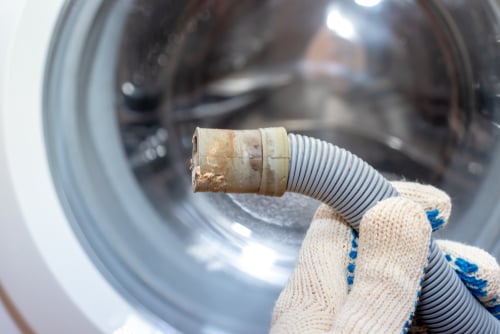Springtime brings rays of sunshine and freshly blossomed flowers. Depending on where you live, it also brings a lot of rain. If all of that rainwater starts to build up, it can cause yard problems and foundation issues and even drain into your basement. American Home Shield has helpful tips on how to build a rain garden that will help dry up your yard and add some breathtaking landscaping.
Benefits of a Rain Garden
Do you have standing water in your yard and are worried puddles will appear in your basement? A DIY rain garden may be the drainage solution you need. An eye-catching rainwater garden is one of the best, low-maintenance yard-draining solutions you can make for your home. The thirsty plants soak up the excess water, which helps divert it away from your house and minimize water damage.
Creating a rain garden is a fun way to solve your drainage problem and make your yard beautiful, and it may even help the environment. A rain garden helps to reduce the number of lawn chemicals and amount of pet waste that run into the sewers, local lakes, and rivers. Rain gardens are considered “green infrastructure” in some communities and often qualify for tax breaks or rebate programs.
Building a Rain Garden
Here are the steps for how to build a rain garden.
1. Decide where your garden needs to be.
The optimal rain garden design diverts water away from your home, so it needs to be at least 10 feet from your house and in a low spot, where water will easily collect. You’ll need a minimum slope of one inch in a 4.5-foot area. To determine the appropriate depth of your rain garden, calculate how quickly water drains in your yard.
2. Develop your rain garden design plans.
When drafting your rain garden ideas, decide if you want to create a “riverbed” from the gutters to the garden with decorative rocks or if you prefer to channel the water from a downspout through a PVC pipe underground.
Although laying the pipe is much more labor-intensive (you may have to run it under a walkway, for example), it may be your best option if the water is pooling close to your house. Once you decide between riverbed and piping, it’s time to determine the shape, size, and plants that you’d like to include.
3. Time to dig.
You’ll need to do some research before grabbing a shovel and digging in, especially if your garden is going to be very large. Contact the national call-before-you-dig hotline by dialing 811 or visiting the website to ensure you can safely dig without hitting any underground utility lines.
Once the area has been dug out, fill in all but the top 6 to 12 inches of your garden with rain garden soil. Slope the sides of the garden, so it’s deeper in the middle, and create berms—or slight ridges—along the way to easily catch and retain water. Your local nursery experts will be able to tell you how much compost and native soil should make up your rain garden soil. If your yard is made up of mostly clay, you may need to follow special steps.
4. Choose your plants.
The best plants for a rain garden have average-to-moist water requirements and deep root systems. When considering native plants for your specific area, look for deep-rooted grasses, sedges, and rushes. Put the plants that require the least amount of water along the edges.
For the deepest section of your garden, you may want to consider plants that grow along the edges of ponds, like:
-
Lady fern
-
Yellow flag iris
-
Cardinal flower
-
Cattails
-
Swamp sunflower
Whether you opt for greenery or flowers, rain garden plants are a great landscaping idea to help control water buildup. If you need help during this stage of building your rainwater garden, consider hiring a landscaper.
5. Provide the proper care for your plants.
When everything is covered in mulch and the job is complete, you don’t want to ignore the garden. The first year or two may require more TLC since the plants are new. Follow these steps for a thriving garden:
-
Regularly remove weeds and invasive plants.
-
Fill in with mulch as needed.
-
During dry seasons, water the plants—either by hand or with lawn sprinklers—until the first few inches of soil are moist.
-
Remove any debris or leaves that may stop the flow of water through the garden.
Once your plants are well-established after a year or so, your rain garden should flourish with minimal upkeep.
Was this article helpful?






